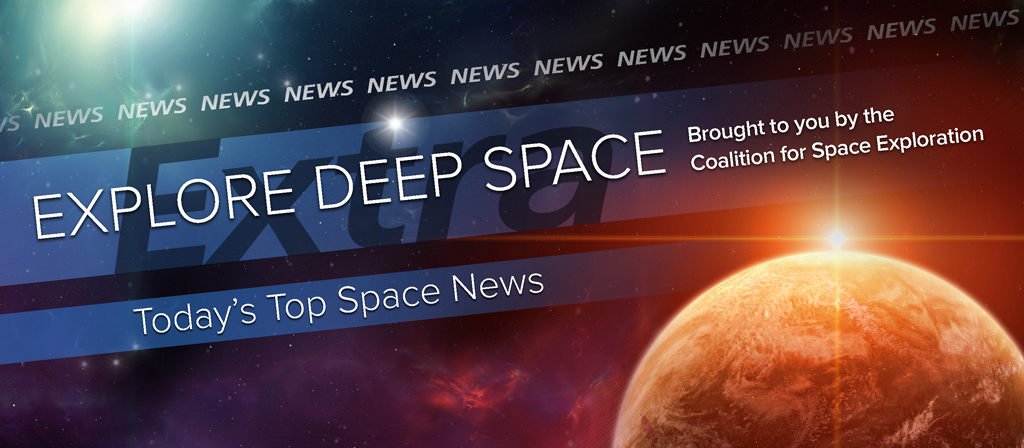Today’s Deep Space Extra offers the latest reporting and commentary on space related activities from across the globe. Mercury astronaut John Glenn, the first American to circle the Earth nearly 54 years ago, demonstrated the potential of human space exploration. Oklahoma lawmaker Jim Bridenstine previewed a U.S. civil, national security space reform plan this week. Russia considers a possible space robot for the riskiest exploration challenges. NASA’s new Planetary Defense Coordination Office will lead efforts to find, track asteroids and comets that pose a collision threat. Mighty Jupiter and Saturn fend off collision threats to Earth. NASA’s Dawn spacecraft delivers new close-up images of the giant asteroid Ceres. Stay tuned for evidence of gravity waves. The Florida shuttle mock-up Inspiration will be overhauled for a new educational outreach mission. China’s ambitious 2016 launch plans include a second space station and astronauts.
Human Deep Space Exploration
John Glenn is not spam
Aviation Week & Space Technology (1/13): Turning to its archives, the trade publication recalls the strides made by the first American to orbit the Earth, Mercury astronaut John Glenn. His three-orbit flight, soon to mark its 54th anniversary, demonstrated that humans would play an important part in the Apollo moon missions that would follow.
Bridenstine planning broad space reform bill
Space News (1/12): U.S. Rep. Jim Bridenstine previews the American Space Renaissance Act, which will offer reforms for the nation’s civil as well as national security space activities and operations. “I’m under no illusions that we’ll put it in the hopper and pass it,” he told the Washington Space Business Roundtable earlier this week. But, he added, “it was important to do a comprehensive bill that takes a global look at space.” The Oklahoma lawmaker is a member of the House Armed Services Committee as well as the House Space, Science and Technology Committee.
Russian scientists developing avatar robot for extraterrestrial exploration
Sputnik News (1/12): Russia announces the pursuit of a humanoid robot that could take on some of exploration’s most risky activities, plus assembling structures and power systems on planetary surfaces.
Unmanned Deep Space Exploration
If NASA’s new PDCO office is making news, you want to know why
Huntsville Times (1/12): NASA has moved to consolidate the discovery and tracking of asteroids and comets that cross the Earth’s orbital track. The agency’s Planetary Defense Coordination Office could be a catalyst in preventing a future collision as well as preparing for the rare impact.
Life on Earth can thank its lucky stars for Jupiter and Saturn
Space.com (1/12): Positioned as they are in the outer solar system, the large planets Jupiter and Saturn have a long history of protecting Earth and other inner planets from impacts by inbound comets and other planetary objects.
NASA publishes tantalizing close-ups of dwarf planet Ceres
Spaceflightnow.com (1/12): The latest images from NASA’s Dawn spacecraft, which has been orbiting the large asteroid Ceres since last March, reveal young craters, ripples and more hints of bright spots that may be salt deposits left by an underground layer or briny water ice that was exposed by impacts. “Everywhere we look in these new low-altitude observations, we see amazing landforms that speak to the unique character of this most amazing world,” said Chris Russell, principal investigator for the Dawn mission, based at the University of California, Los Angeles. Dawn reached a new low-altitude orbit around Ceres in December.
Rumor of gravitational wave discovery is just that, source says
Science (1/12): The publication urges caution in assessing media reports that a $500-million project called the Laser Interferometer Gravitational-Wave Observatory (LIGO) has managed to confirm the theoretical presence of gravity waves. The discovery would be associated with observations of two neutron stars spiraling into one another, creating ripples in space time.
Low Earth Orbit
Shuttle for tomorrow: Mock NASA orbiter ‘Inspiration’ moving for river tour
Collectspace.com (1/13): Inspiration, an aging mock-up of a NASA space shuttle orbiter, is being overhauled to serve as an educational attraction by traveling the waterways of the United States. LVX System plans to equip Inspiration, now at the Astronaut Hall of Fame at the Kennedy Space Center, with a state-of-the-art theater for the river-bound educational outreach mission.
Commercial to Low Earth Orbit
China plans more than 20 space launches in 2016
Spaceflight Insider (1/12): China’s 2016 launch manifest includes the Tiangong 2 space laboratory and a manned spacecraft Shenzhou 11 mission as well as military and commercial payloads.

